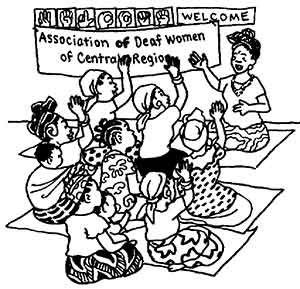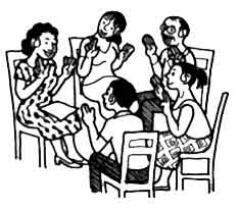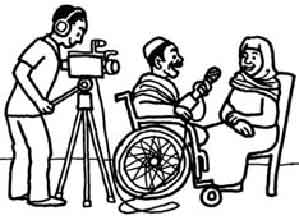Your progress
0%
These considerations can guide your decision to add or not to add these actions to your action plan.
Use your mouse or keyboard to expand each of the activity headings below. To add an activity to your action plan, select the Add button beside it.

Some basic considerations when assessing the quality of communication are as follows:
Additional resource:

After identifying people with communication impairments, the following steps may be taken:
CBR can help reduce or remove communication barriers in the following ways:
Learn about the many changes that occurred once deaf people learned how to use sign language in the Philippines


On the island of Bohol in the Philippines, the local CBR introduced basic sign language training for people with hearing impairments, their families and community members. This initiative aims to raise awareness about deaf culture and encourage people to respect and communicate with deaf people.
In 2008, over 200 community members, ranging in age from eight to 68 and from all walks of life, learned to sign, and have now gone on to teach sign language to their families and friends.
At the end of one of the training courses, the trainers (mostly deaf adults) were invited to conduct similar training programmes at the local university. The university paid them for this work.
Three of the most outstanding university students have now joined the CBR project as teachers of deaf high-school students.
CBR should assist individuals with disabilities to build self confidence and the ability to speak in public, write petitions, dialogue with others and negotiate.
To support these efforts, CBR should:
To support people with disabilities, CBR personnel need to be effective communicators. They must be able to interact with people from many different backgrounds and walks of life, and to communicate information clearly, using communication methods that are suitable for all people with disabilities. This is especially true:
CBR personnel need to:
